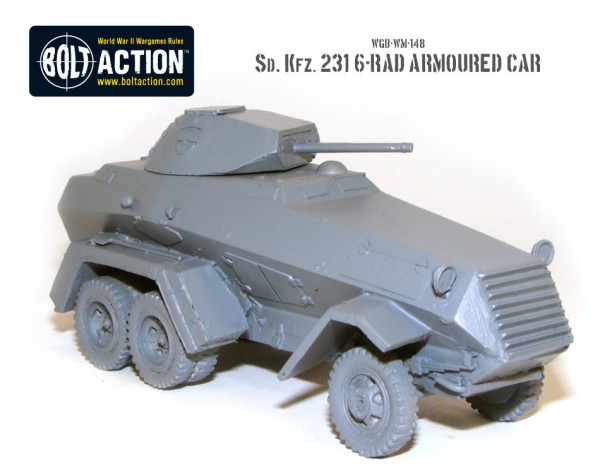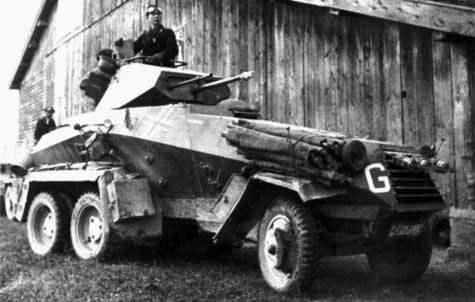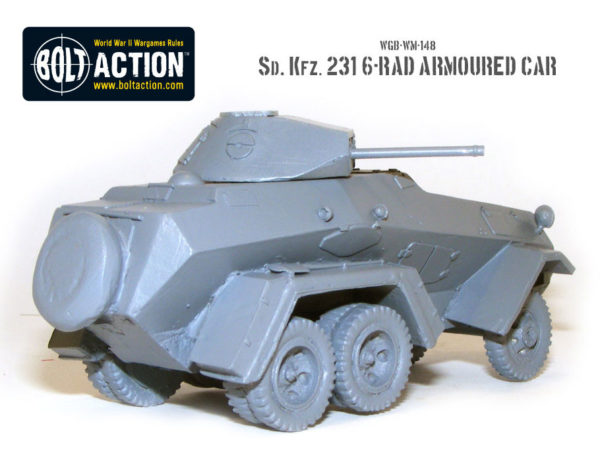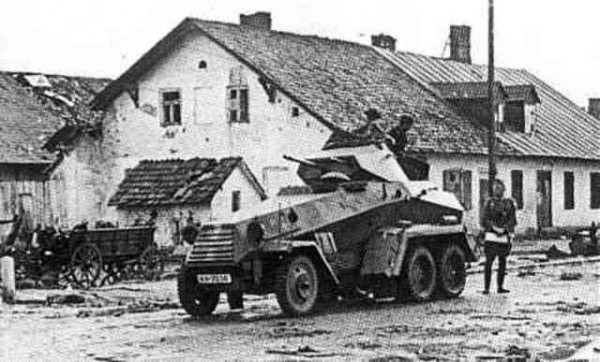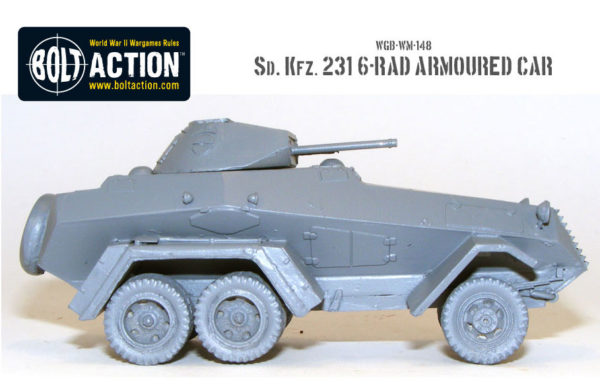The first in the line of true German armoured cars, The 6-wheel drive Sd.Kfz 231 had excellent mobility. Used in Aufklarungs units (reconnaissance) during the early stages of the war they saw action in the Fall of France, the Blitzkrieg attack on Poland and during the invasion of Soviet Russia.
In the German Army, armoured cars were intended for the traditional cavalry missions of reconnaissance and screening. They scouted ahead of mechanized units to assess enemy strength and location. Their primary role was to observe rather than fight enemy units, although they were expected to fight enemy reconnaissance elements when required.
The 231 was armed with a 2 cm KwK 30 L/55 autocannon, and a Maschinengewehr 13machine gun. It had a second driver in the rear so that the vehicle could be driven either forwards or backwards with relative ease.
The 231 was introduced into service in 1932 and began to be replaced in 1937 when the German Army switched production to 8-wheeled armoured cars instead of 6-wheeled. Despite being replaced, they were used by Aufklärungs (units during the Invasion of Poland, the Battle of France, and the invasion of the USSR. They were withdrawn afterwards for use in internal security and training. The crew consisted of a commander, gunner, driver, and a radio operator/rear driver.

